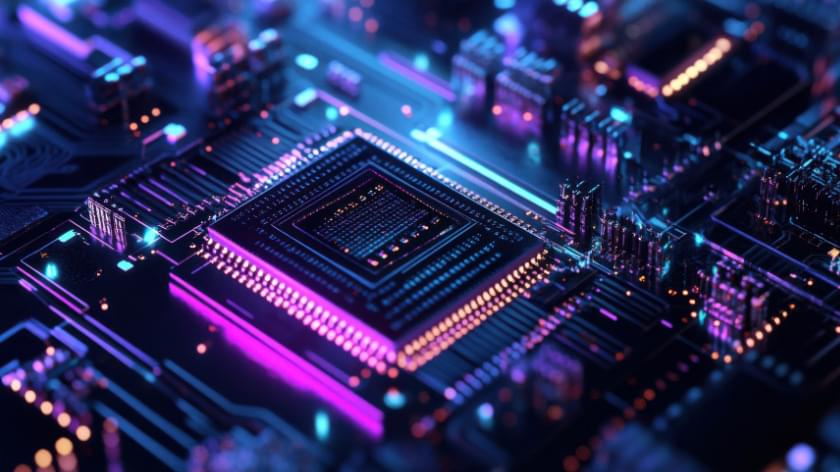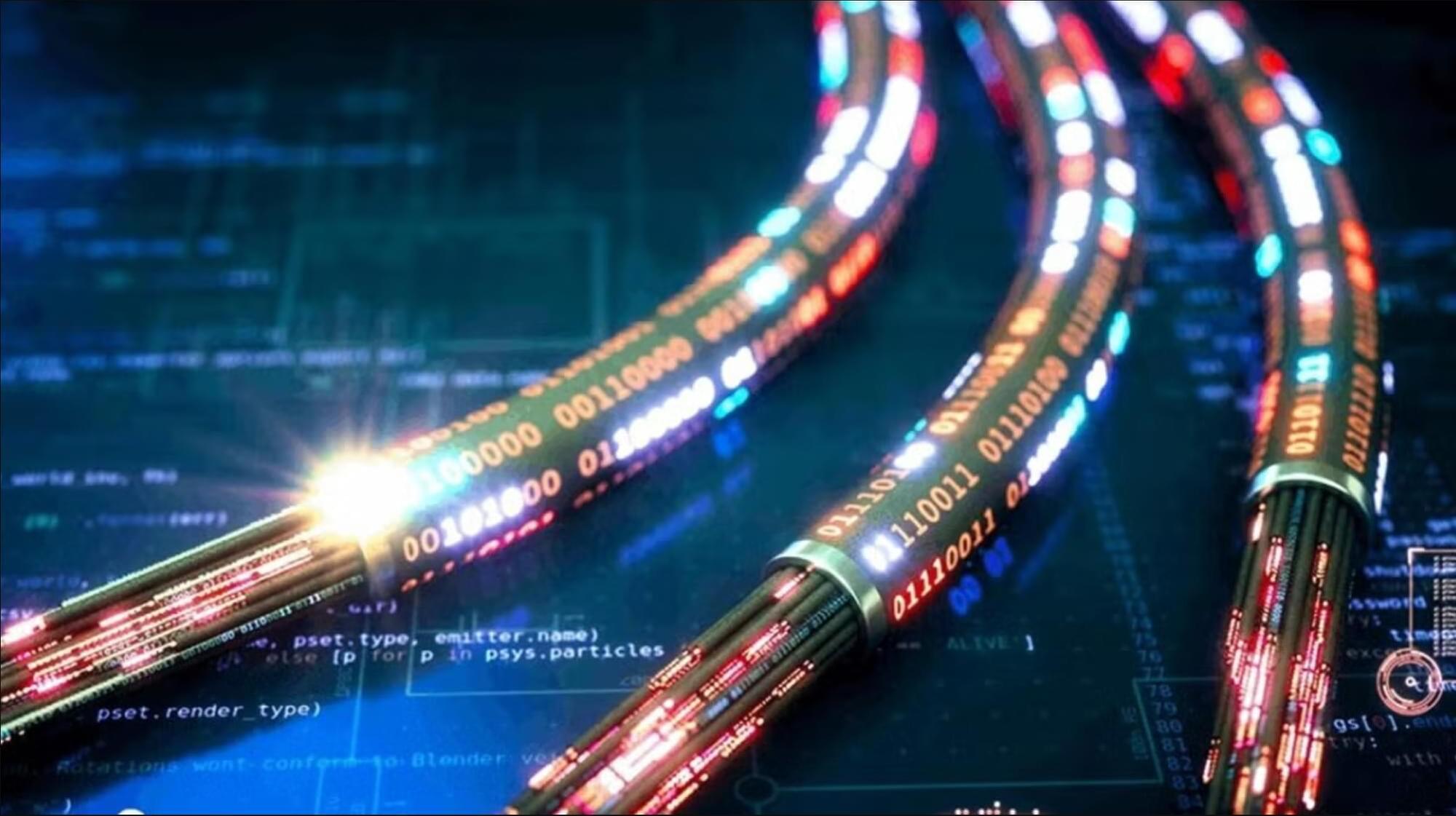German researchers develop AI chip that learns like the brain, works without the internet and consumes minimal energy.



SpaceX says it is ready to offer the world’s most advanced GPS system using the Starlink constellation. SpaceX will have a huge advantage over the 31 GPS satellites in orbit as they already have thousands of satellites in orbit with this number increasing to tens of thousands as soon as Starship is operational.
More importantly, Starlink satellites are 20 times closer to the Earth than regular GPS satellites which makes their signal stronger. In addition, SpaceX is moving towards flying their satellites even closer to the Earth. These new satellites will be flying almost twice as close as the current ones!
The company made its pitch in a Wednesday letter to the FCC after the commission kicked off a public inquiry about developing alternatives to GPS, which has long been run through a single provider, the US Defense Department.
The FCC’s goal is to usher in Positioning, Navigation, and Timing (PNT) solutions to complement GPS. In response, SpaceX sent a five-page letter that noted: “One opportunity stands out as a particularly ripe, low-hanging fruit: facilitating the rapid deployment of next-generation low-Earth orbit (‘LEO’) satellite constellations that can deliver PNT as a service alongside high-speed, low-latency broadband and ubiquitous mobile connectivity.”
The letter says SpaceX has already been working on a PNT system for its cellular Starlink service, which is in public beta and will launch through T-Mobile in July.
AI surveillance, AI surveillance systems, AI surveillance technology, AI camera systems, artificial intelligence privacy, AI tracking systems, AI in public surveillance, smart city surveillance, facial recognition technology, real time surveillance ai, AI crime prediction, predictive policing, emotion detecting ai, AI facial recognition, privacy in AI era, AI and data collection, AI spying tech, surveillance capitalism, government surveillance 2025, AI monitoring tools, AI tracking devices, AI and facial data, facial emotion detection, emotion recognition ai, mass surveillance 2025, AI in smart cities, china AI surveillance, skynet china, AI scanning technology, AI crowd monitoring, AI face scanning, AI emotion scanning, AI powered cameras, smart surveillance system, AI and censorship, privacy and ai, digital surveillance, AI surveillance dangers, AI surveillance ethics, machine learning surveillance, AI powered face id, surveillance tech 2025, AI vs privacy, AI in law enforcement, AI surveillance news, smart city facial recognition, AI and security, AI privacy breach, AI threat to privacy, AI prediction tech, AI identity tracking, AI eyes everywhere, future of surveillance, AI and human rights, smart cities AI control, AI facial databases, AI surveillance control, AI emotion mapping, AI video analytics, AI data surveillance, AI scanning behavior, AI and behavior prediction, invisible surveillance, AI total control, AI police systems, AI surveillance usa, AI surveillance real time, AI security monitoring, AI surveillance 2030, AI tracking systems 2025, AI identity recognition, AI bias in surveillance, AI surveillance market growth, AI spying software, AI privacy threat, AI recognition software, AI profiling tech, AI behavior analysis, AI brain decoding, AI surveillance drones, AI privacy invasion, AI video recognition, facial recognition in cities, AI control future, AI mass monitoring, AI ethics surveillance, AI and global surveillance, AI social monitoring, surveillance without humans, AI data watch, AI neural surveillance, AI surveillance facts, AI surveillance predictions, AI smart cameras, AI surveillance networks, AI law enforcement tech, AI surveillance software 2025, AI global tracking, AI surveillance net, AI and biometric tracking, AI emotion AI detection, AI surveillance and control, real AI surveillance systems, AI surveillance internet, AI identity control, AI ethical concerns, AI powered surveillance 2025, future surveillance systems, AI surveillance in cities, AI surveillance threat, AI surveillance everywhere, AI powered recognition, AI spy systems, AI control cities, AI privacy vs safety, AI powered monitoring, AI machine surveillance, AI surveillance grid, AI digital prisons, AI digital tracking, AI surveillance videos, AI and civilian monitoring, smart surveillance future, AI and civil liberties, AI city wide tracking, AI human scanner, AI tracking with cameras, AI recognition through movement, AI awareness systems, AI cameras everywhere, AI predictive surveillance, AI spy future, AI surveillance documentary, AI urban tracking, AI public tracking, AI silent surveillance, AI surveillance myths, AI surveillance dark side, AI watching you, AI never sleeps, AI surveillance truth, AI surveillance 2025 explained, AI surveillance 2025, future of surveillance technology, smart city surveillance, emotion detecting ai, predictive AI systems, real time facial recognition, AI and privacy concerns, machine learning surveillance, AI in public safety, neural surveillance systems, AI eye tracking, surveillance without consent, AI human behavior tracking, artificial intelligence privacy threat, AI surveillance vs human rights, automated facial ID, AI security systems 2025, AI crime prediction, smart cameras ai, predictive policing technology, urban surveillance systems, AI surveillance ethics, biometric surveillance systems, AI monitoring humans, advanced AI recognition, AI watchlist systems, AI face tagging, AI emotion scanning, deep learning surveillance, AI digital footprint, surveillance capitalism, AI powered spying, next gen surveillance, AI total control, AI social monitoring, AI facial mapping, AI mind reading tech, surveillance future cities, hidden surveillance networks, AI personal data harvesting, AI truth detection, AI voice recognition monitoring, digital surveillance reality, AI spy software, AI surveillance grid, AI CCTV analysis, smart surveillance networks, AI identity tracking, AI security prediction, mass data collection ai, AI video analytics, AI security evolution, artificial intelligence surveillance tools, AI behavioral detection, AI controlled city, AI surveillance news, AI surveillance system explained, AI visual tracking, smart surveillance 2030, AI invasion of privacy, facial detection ai, AI sees you always, AI surveillance rising, future of AI spying, next level surveillance, AI technology surveillance systems, ethical issues in AI surveillance, AI surveillance future risks.



We, of course, feel “internal experiences,” that thing we call self, and we know very well when we’ve woken up. Consciousness, in fact, is what we lose when we fall asleep and regain when we wake up. ChatGPT 4.0 is emulating those human feelings. That doesn’t mean it actually feels them. But what if it does feel them one day? Will we listen to it then?
Schneider is among the intellectuals who believe that the question of machine consciousness is worth examining in depth. Not because she believes we’re already there, but because she believes it will happen sooner or later. Like Hassabis, she estimates that artificial general intelligence (AGI) — the name computer scientists give to something close enough to human intelligence to escape the simulacrum label and access a qualitatively different level — is a few decades away.
AGI will be a system capable of learning from experience without having to swallow the entire internet before breakfast; capable of abstracting information, projecting actions, and understanding situations it has never encountered before. And yes, perhaps capable of having “inner experiences,” or what we might call a form of consciousness. Don’t take it out on me; it’s philosophers who are examining this question.
What if with the condition machine super intelligence is possible once one comes into existence it sends von Neumann machines that converts solar systems into computers of like power and intelligence such machines would be factories miles long and they as well would be do the same until the entire galaxy would become an artificially intelligent entity procreating matrioska brains.
Adi Newton’s track from the compilation “The Neuromancers. Music inspired by William Gibson’s universe” published by Unexplained Sounds Group: https://unexplainedsoundsgroup.bandca… dl, cd, book. Music by: Adi Newton, NYORAI, Oubys (Wannes Kolf), Mario Lino Stancati, Joel Gilardini, Tescon Pol, phoanøgramma, Dead Voices On Air, SIGILLUM S, Richard Bégin, André Uhl. Stories by: Stories by: Andrew Coulthard, Chris McAuley, Glynn Owen Barrass, J. Edwin Buja, Michael F. Housel, Paolo L. Bandera, Rusell Smeaton, Scott J. Couturier. The soundtrack of a future in flux As the father of cyberpunk, William Gibson imagined a world where technology and society collide, blurring the boundaries between human and machine, individual and system. His novels, particularly Neuromancer, painted a dystopian future where sprawling megacities pulse with neon, corporations rule from the shadows, and cyberspace serves as both playground and battlefield. In his vision, technology is a tool of empowerment and control, a paradox that resonates deeply in our contemporary world. Gibson’s work has long since transcended literature, becoming a blueprint for how we understand technology’s role in shaping our lives. The term cyberspace, which he coined, feels more real than ever in today’s internet-driven world. We live in a time where virtual spaces are as important as physical ones, where our identities shift between digital avatars and flesh-and-blood selves. The rapid rise of AI, neural interfaces, and virtual reality feels like a prophecy fulfilled — as though we’ve stepped into the pages of a Gibson novel. A SONIC LANDSCAPE OF THE FUTURE The influence of cyberpunk on contemporary music is undeniable. The genre’s aesthetic, with its dark, neon-lit streets and synth-driven soundscapes, has found its way into countless genres, from techno and industrial to synthwave and ambient. Electronic music, in particular, feels like the natural soundtrack of the cyberpunk world — synthetic, futuristic, and often eerie, it evokes the idea of a humanity at the edge of a technological abyss. The cyberpunk universe forces us to confront uncomfortable truths about the way we live today: the increasing corporatization of our world, the erosion of privacy, and the creeping sense that technology is evolving faster than we can control. Though cyberpunk as a literary genre originated in the 1980s, its influence has only grown in the decades since. In music, the cyberpunk ethos is more relevant than ever. Artists today are embracing the tools of technology not just to create new sounds, but to challenge the very definition of music itself. THE FUTURE OF MUSIC IN A CYBERPUNK WORLD Much like Gibson’s writing, the music in this compilation embraces technology not only as a tool but as a medium of expression. It’s no coincidence that many of the artists featured here draw from electronic, industrial, and experimental music scenes—genres that have consistently pushed the boundaries of sound and technology. The contributions of Adi Newton, a pioneering figure in cyberpunk music, along with artists such as Dead Voices On Air, Sigillum S, Tescon Pol, Oubys, Joel Gilardini, phoanøgramma, Richard Bégin, Mario Lino Stancati, Nyorai, Wahn, and André Uhl, each capture unique facets of the cyberpunk universe. Their work spans from the gritty, rebellious underworlds of hackers, to the cold, calculated precision of AI, and the vast, sprawling virtual landscapes where anything is possible—and everything is controlled. These tracks serve as a sonic exploration of Gibson’s vision, translating the technological, dystopian landscapes of his novels into sound. They are both a tribute and a challenge, asking us to reflect on what it means to be human in a world where technology has permeated every corner of our existence. Just as Gibson envisioned a future where humanity and machines converge, the artists in this compilation fuse organic and synthetic sounds, analog and digital techniques, to evoke the tensions of the world he foretold. Curated and mastered by Raffaele Pezzella (Sonologyst). Layout by Matteo Mariano. Cat. Num. USG105. Unexplained Sounds Network labels: https://unexplainedsoundsgroup.bandca… https://eighthtowerrecords.bandcamp.com https://sonologyst.bandcamp.com https://therecognitiontest.bandcamp.com https://zerok.bandcamp.com https://reversealignment.bandcamp.com Magazine and radio (Music, Fiction, Modern Mythologies) / eighthtower Please subscribe the channel to help us to create new music and videos. Great thanks to the patrons and followers for supporting and sustain the creative work we’re doing. Facebook:
/ unexplaineds… Instagram:
/ unexplained… Twitter:
/ sonologyst.

Scientists are working to send quantum information through existing fiber networks. This shift could save billions in infrastructure costs and speed up the arrival of quantum-powered technologies.
Unlike regular data, quantum communication sends information through single photons. These photons hold fragile quantum states that are easy to disturb. That makes sharing fiber lines with classical Internet traffic a serious technical challenge.
Classical signals, especially those powered by lasers, flood the fiber with light. This generates a kind of noise called inelastic scattering. One type, known as spontaneous Raman scattering, floods the line with stray photons that can drown out the quantum signals.

Researchers at Rensselaer Polytechnic Institute (RPI) are tackling one of the most complex challenges in the world of quantum information—how to create reliable, scalable networks that can connect quantum systems over distances.
Their work has resulted in two publications in Physical Review Letters and Science Advances, bringing us one step closer to realizing large-scale networked quantum systems, or even the quantum internet.
The research team, which includes faculty members from the RPI Department of Physics, Applied Physics, and Astronomy, and the Department of Computer Science, is led by Assistant Professor Xiangyi Meng, Ph.D. Their research focuses on designing quantum networks that use entanglement—a phenomenon where quantum particles become mysteriously correlated.